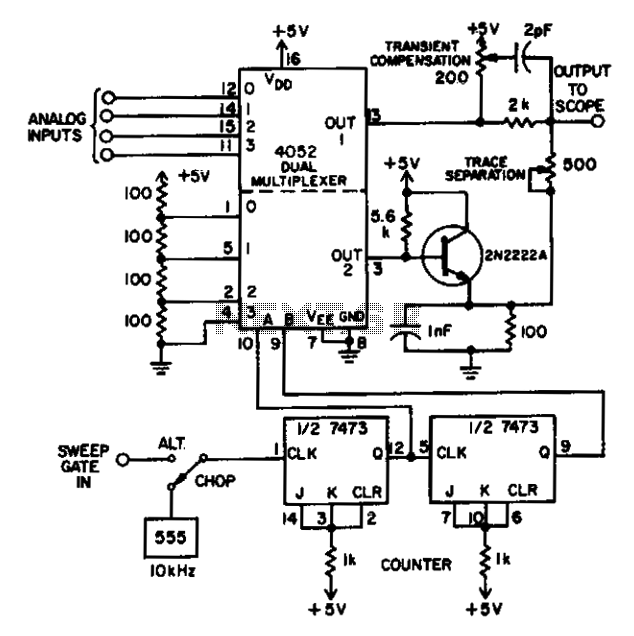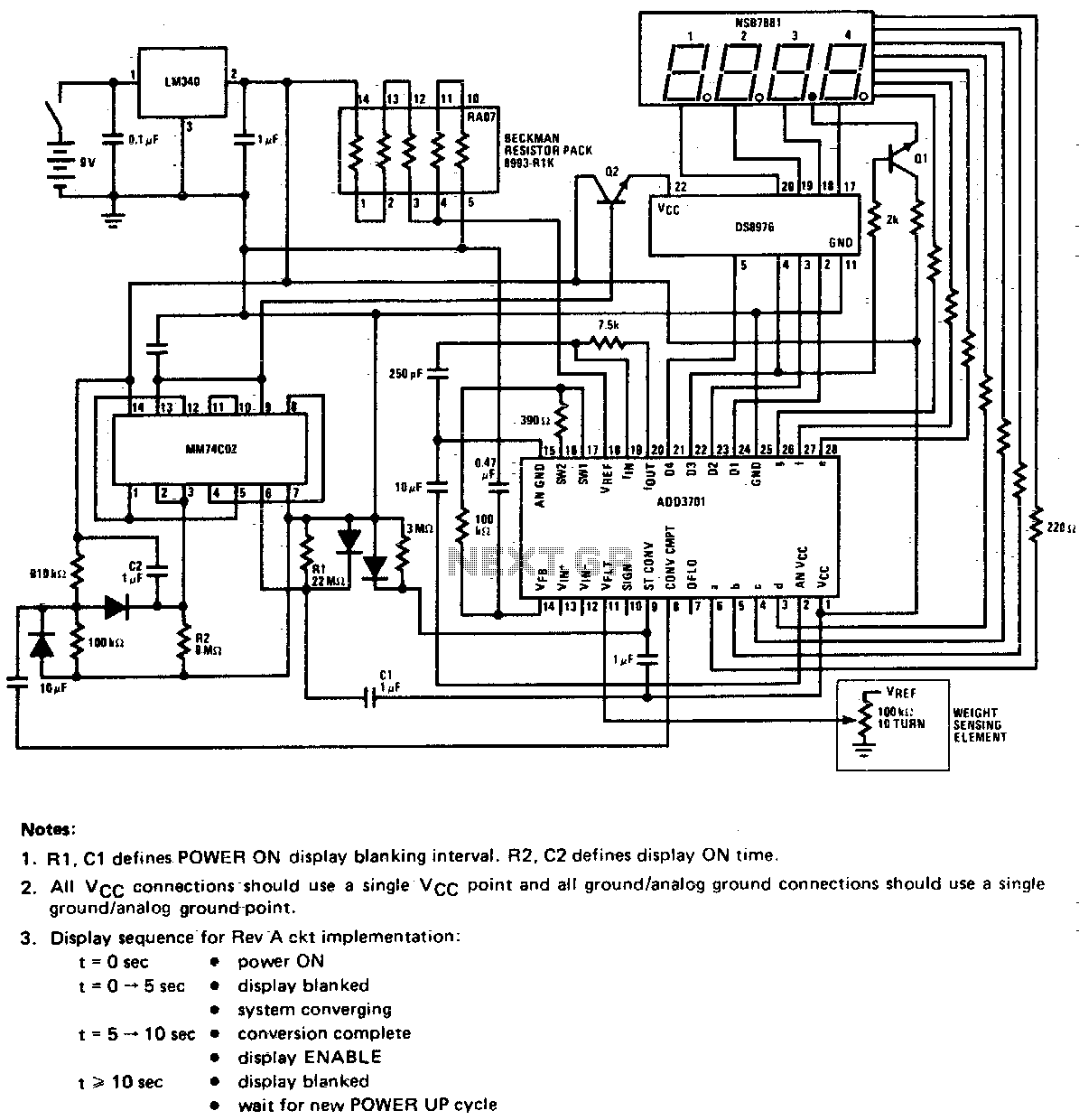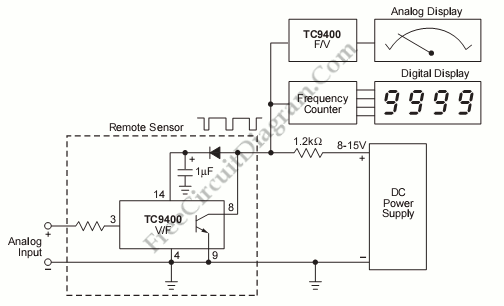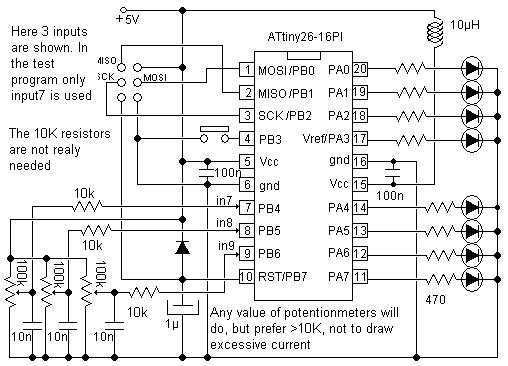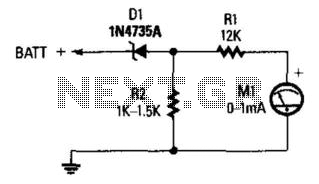
Analog to Digital Converters (AD)

This type of converter is used to convert analog voltage to its corresponding digital output. The function of the analog-to-digital converter is exactly opposite to that of a digital-to-analog converter. Like a digital-to-analog converter, an analog-to-digital converter is also specified as 8, 10, 12, or 16 bits. Though there are many types of analog-to-digital converters, only the successive approximation type will be discussed. A successive approximation analog-to-digital converter consists of a comparator, a successive approximation register (SAR), output latches, and a digital-to-analog converter. The main component of the circuit is the 8-bit SAR, whose output is fed into an 8-bit digital-to-analog converter. The analog output from the digital-to-analog converter is then compared to an analog input signal by the comparator. The output of the comparator serves as a serial data input to the SAR. The SAR continuously adjusts itself until the digital output (8 bits) matches the analog input. The 8-bit latch at the end of the conversion process holds the resultant digital data output. At the beginning of a conversion cycle, the SAR is reset by bringing the start signal (S) high. The most significant bit (MSB) of the SAR (Q7) is set as soon as the first transition from low to high occurs. The output is then sent to the digital-to-analog converter, which produces an analog equivalent of the MSB for comparison with the analog input. Based on the comparator's output, the SAR will either retain or reset the Q6 bit. This process continues until all bits have been assessed. After the Q0 bit is processed, the SAR raises the conversion complete (CC) signal to indicate that valid data is present on the parallel output lines. The CC signal subsequently enables the latch, allowing the digital data to appear at the output of the latch. As the SAR determines each bit, digital data is also available in serial form. The CC signal is connected to the start conversion input to facilitate continuous conversion cycles.
The successive approximation analog-to-digital converter (SAR ADC) operates by iteratively narrowing down the value of the analog input voltage through a series of comparisons. The core components include a comparator that evaluates the output of the digital-to-analog converter against the input voltage, a successive approximation register that manages the bit-setting process, and output latches that hold the final digital representation.
During the conversion process, the SAR initiates by resetting itself and setting the most significant bit (MSB). The comparator's role is crucial, as it determines whether to keep or reset each bit based on the outcome of the comparison. The iterative process continues until all bits have been processed, culminating in a digital representation that closely matches the analog input. The conversion complete (CC) signal serves as a flag to indicate that the output data is valid and ready for use.
This architecture allows for efficient and accurate conversion of analog signals into digital form, making it suitable for various applications such as digital signal processing, data acquisition systems, and microcontroller interfacing. The design's ability to produce both parallel and serial outputs enhances its versatility in different electronic systems, facilitating integration with various digital devices and communication protocols.This type of converter is used to convert analog voltage to its corresponding digital output. The function of the analog to digital converter is exactly opposite to that of a DIGITAL TO ANALOG CONVERTER. Like a D/A converter, an A/D converter is also specified as 8, 10, 12 or 16 bit. Though there are many types of A/D converters, we will be discus sing only about the successive approximation type. A successive approximation A/D converter consists of a comparator, a successive approximation register (SAR), output latches, and a D/A converter. The circuit diagram is shown below. The main part of the circuit is the 8-bit SAR, whose output is given to an 8-bit D/A converter. The analog output Va of the D/A converter is then compared to an analog signal Vin by the comparator.
The output of the comparator is a serial data input to the SAR. Till the digital output (8 bits) of the SAR is equivalent to the analog input Vin, the SAR adjusts itself. The 8-bit latch at the end of conversation holds onto the resultant digital data output. At the start of a conversion cycle, the SAR is reset by making the start signal (S) high. The MSB of the SAR (Q7) is set as soon as the first transition from LOW to HIGH is introduced. The output is given to the D/A converter which produces an analog equivalent of the MSB and is compared with the analog input Vin.
According to the comparator output, the SAR will either keep or reset the Q6 bit. This process goes on until all the bits are tried. After Q0 is tried, the SAR makes the conversion complete (CC) signal HIGH to show that the parallel output lines contain valid data. The CC signal in turn enables the latch, and digital data appear at the output of the latch. As the SAR determines each bit, digital data is also available serially. As shown in the figure above, the CC signal is connected to the start conversion input in order to convert the cycle continuously.
Be the first of your friends to get free diy electronics projects, circuits diagrams, hacks, mods, gadgets & gizmo automatically each time we publish. Your email address & privacy are safe with us ! 🔗 External reference
The successive approximation analog-to-digital converter (SAR ADC) operates by iteratively narrowing down the value of the analog input voltage through a series of comparisons. The core components include a comparator that evaluates the output of the digital-to-analog converter against the input voltage, a successive approximation register that manages the bit-setting process, and output latches that hold the final digital representation.
During the conversion process, the SAR initiates by resetting itself and setting the most significant bit (MSB). The comparator's role is crucial, as it determines whether to keep or reset each bit based on the outcome of the comparison. The iterative process continues until all bits have been processed, culminating in a digital representation that closely matches the analog input. The conversion complete (CC) signal serves as a flag to indicate that the output data is valid and ready for use.
This architecture allows for efficient and accurate conversion of analog signals into digital form, making it suitable for various applications such as digital signal processing, data acquisition systems, and microcontroller interfacing. The design's ability to produce both parallel and serial outputs enhances its versatility in different electronic systems, facilitating integration with various digital devices and communication protocols.This type of converter is used to convert analog voltage to its corresponding digital output. The function of the analog to digital converter is exactly opposite to that of a DIGITAL TO ANALOG CONVERTER. Like a D/A converter, an A/D converter is also specified as 8, 10, 12 or 16 bit. Though there are many types of A/D converters, we will be discus sing only about the successive approximation type. A successive approximation A/D converter consists of a comparator, a successive approximation register (SAR), output latches, and a D/A converter. The circuit diagram is shown below. The main part of the circuit is the 8-bit SAR, whose output is given to an 8-bit D/A converter. The analog output Va of the D/A converter is then compared to an analog signal Vin by the comparator.
The output of the comparator is a serial data input to the SAR. Till the digital output (8 bits) of the SAR is equivalent to the analog input Vin, the SAR adjusts itself. The 8-bit latch at the end of conversation holds onto the resultant digital data output. At the start of a conversion cycle, the SAR is reset by making the start signal (S) high. The MSB of the SAR (Q7) is set as soon as the first transition from LOW to HIGH is introduced. The output is given to the D/A converter which produces an analog equivalent of the MSB and is compared with the analog input Vin.
According to the comparator output, the SAR will either keep or reset the Q6 bit. This process goes on until all the bits are tried. After Q0 is tried, the SAR makes the conversion complete (CC) signal HIGH to show that the parallel output lines contain valid data. The CC signal in turn enables the latch, and digital data appear at the output of the latch. As the SAR determines each bit, digital data is also available serially. As shown in the figure above, the CC signal is connected to the start conversion input in order to convert the cycle continuously.
Be the first of your friends to get free diy electronics projects, circuits diagrams, hacks, mods, gadgets & gizmo automatically each time we publish. Your email address & privacy are safe with us ! 🔗 External reference
